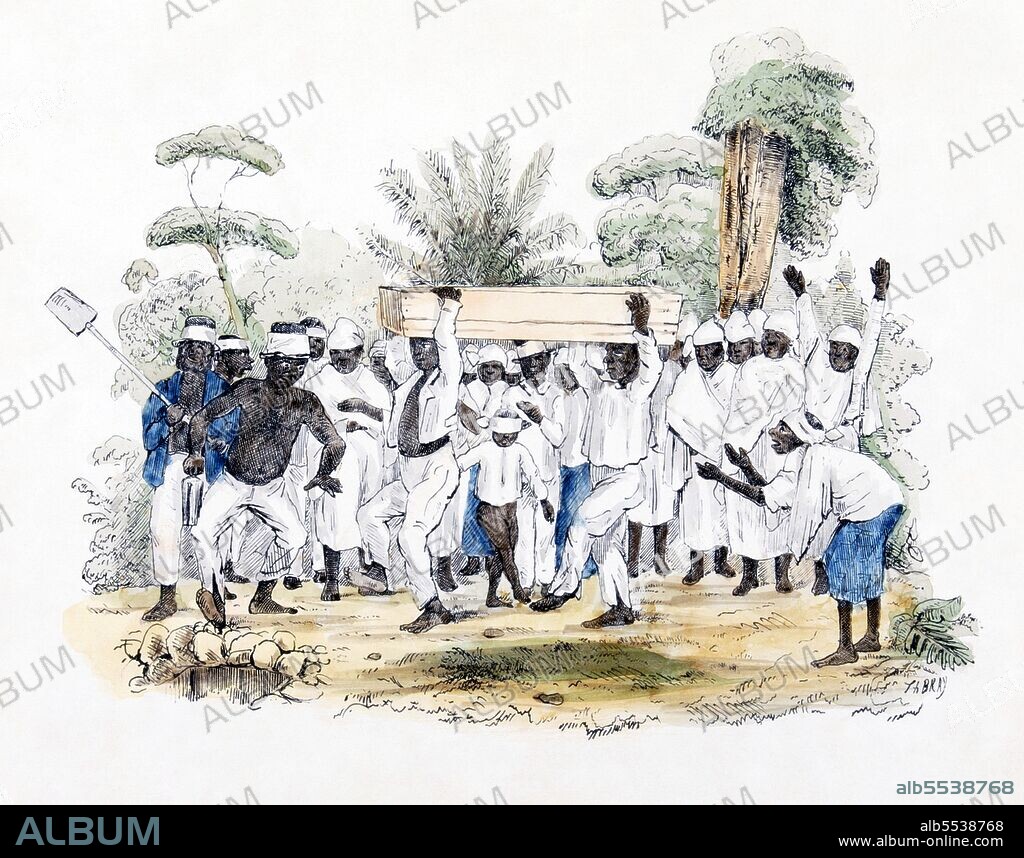alb5538768
Suriname: 'Slave Funeral at a Plantation'. Theodore Bray (1818-1887), c.1850

|
Añadir a otro lightbox |
|
Añadir a otro lightbox |



¿Ya tienes cuenta? Iniciar sesión
¿No tienes cuenta? Regístrate
Compra esta imagen.
Selecciona el uso:

Título:
Suriname: 'Slave Funeral at a Plantation'. Theodore Bray (1818-1887), c.1850
Descripción:
Ver traducción automática
The smallest country in South America, Suriname's diversity began in the 16th century when French, Spanish and English explorers visited the area. A century later, plantation colonies were established by the Dutch and English along the many rivers in the fertile Guyana plains. Disputes arose—as ever—between the Dutch and the English. In 1667, the Dutch decided to keep the nascent plantation colony of Suriname from the English, resulting from the Treaty of Breda. The English were left with New Amsterdam, a small trading post in North America, which later became New York City. As a plantation colony, Surinam was still heavily dependent on manual labor, and to make up for the shortfall, the Dutch brought in contract laborers from the Dutch East Indies (modern Indonesia) and India (through an arrangement with the British). In addition, during the late 19th and early 20th centuries, small numbers of mostly men were brought in from China and the Middle East. Although Suriname's population remains relatively small, because of this unique history it is one of the most ethnically and culturally diverse countries in the world.
Crédito:
Album / Pictures From History/Universal Images Group
Autorizaciones:
Modelo: No - Propiedad: No
¿Preguntas relacionadas con los derechos?
¿Preguntas relacionadas con los derechos?
Tamaño imagen:
5000 x 3930 px | 56.2 MB
Tamaño impresión:
42.3 x 33.3 cm | 16.7 x 13.1 in (300 dpi)
Palabras clave:
AGUAFUERTE • AMERICA DEL SUR • AMERICA MERIDIONAL • AMERICA SUR • ART • ARTE • ARTES • ENGRAVING • ESCLAVA • ESCLAVISMO • ESCLAVITUD • GRABADO • GRABADOS • HISTORIA • HISTORICO • HOLANDA • HOLANDES • HOLANDESA • PAISES BAJOS • PINTURA • SUDAMERICA • SUDAMERICANA • SUR AMERICA • SURINAM
 Pinterest
Pinterest Twitter
Twitter Facebook
Facebook Copiar enlace
Copiar enlace Email
Email
